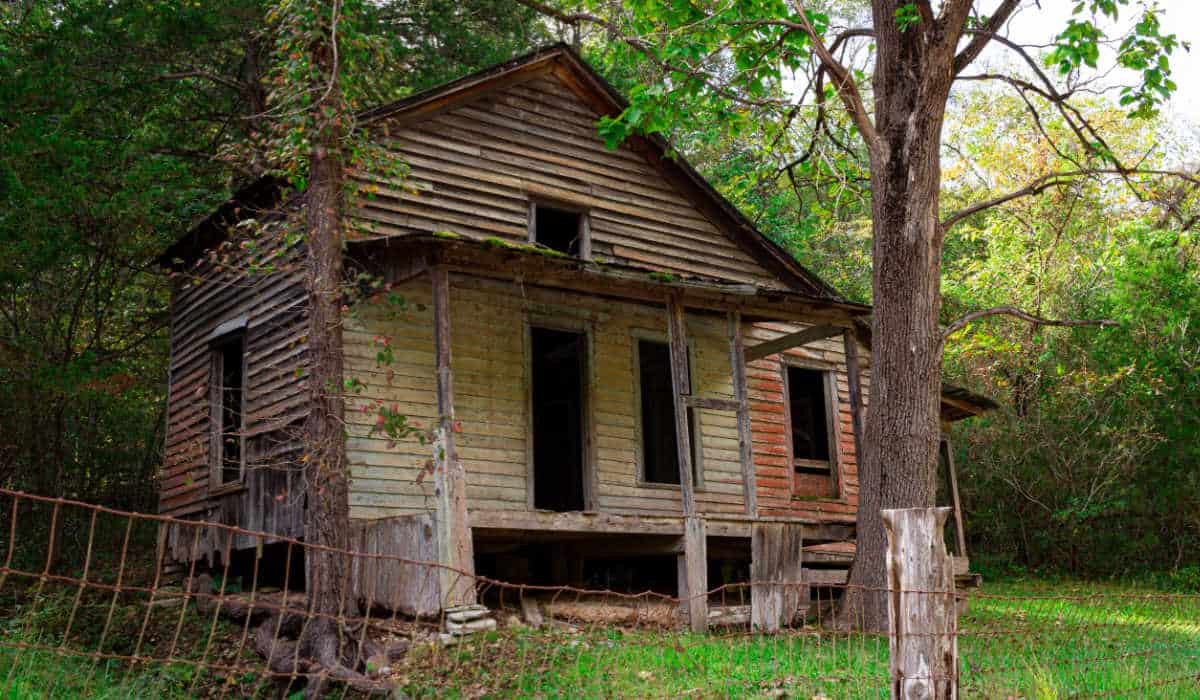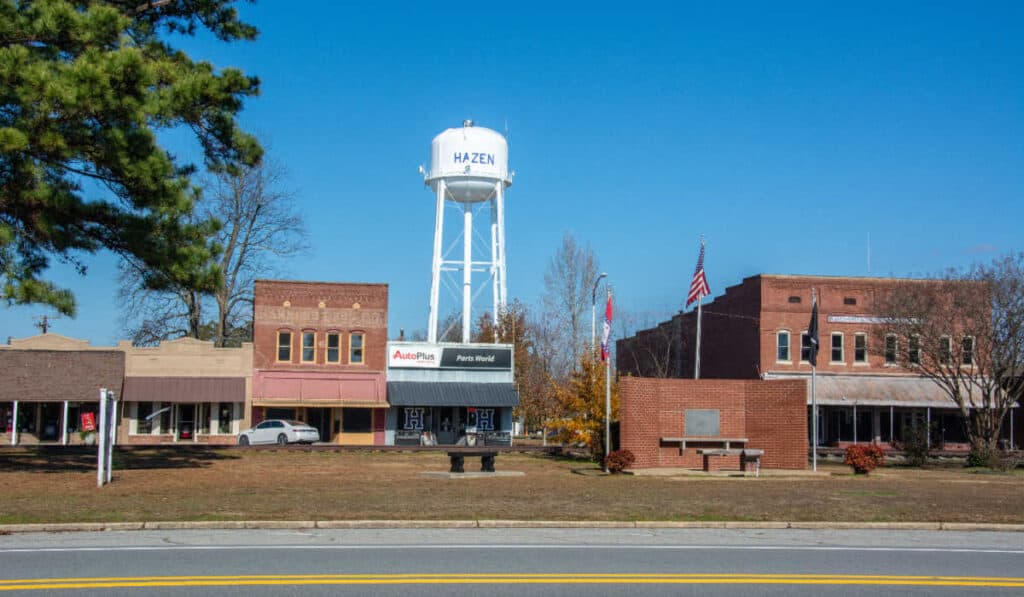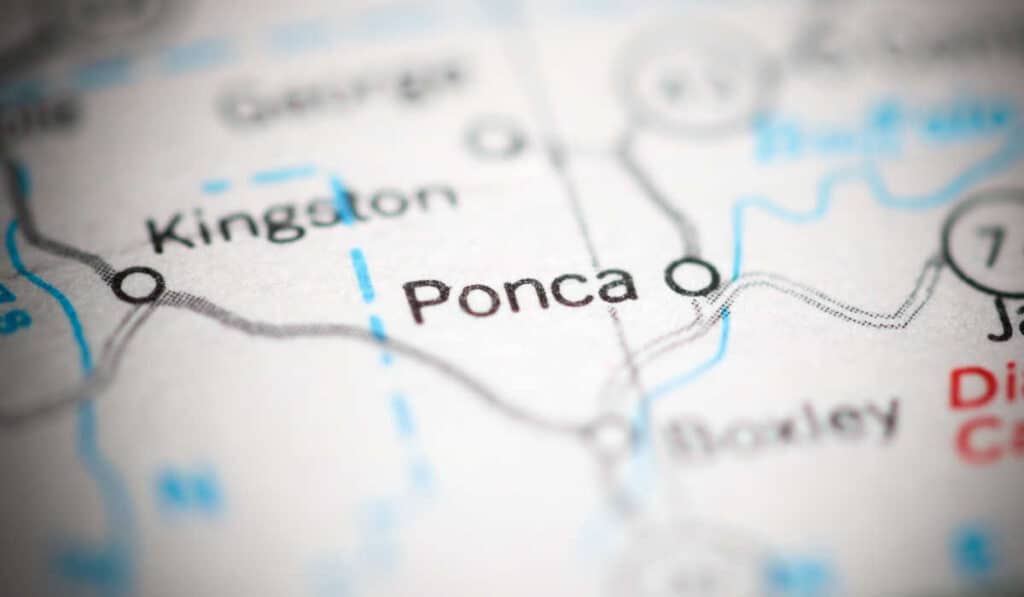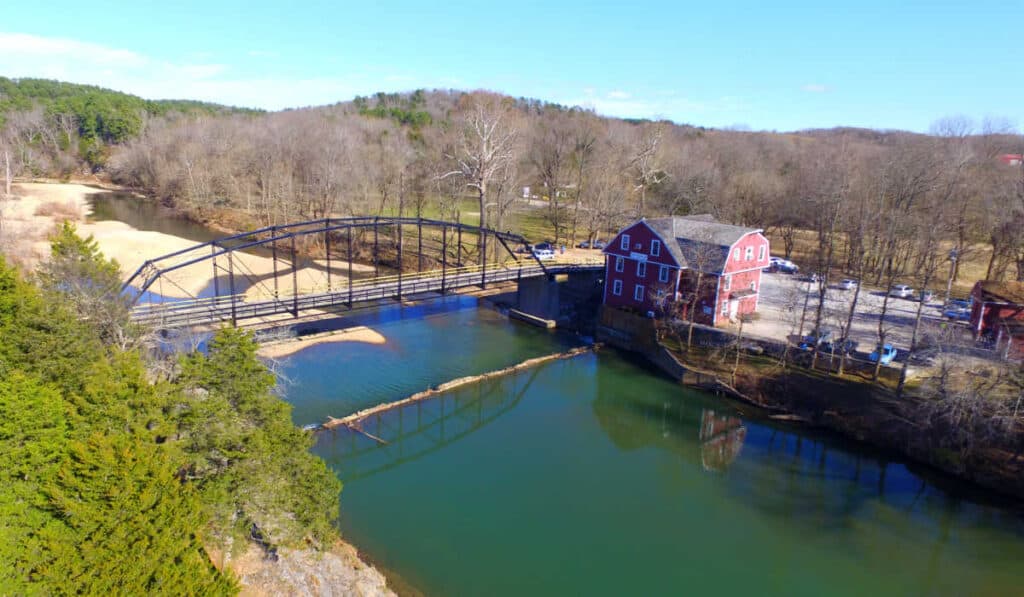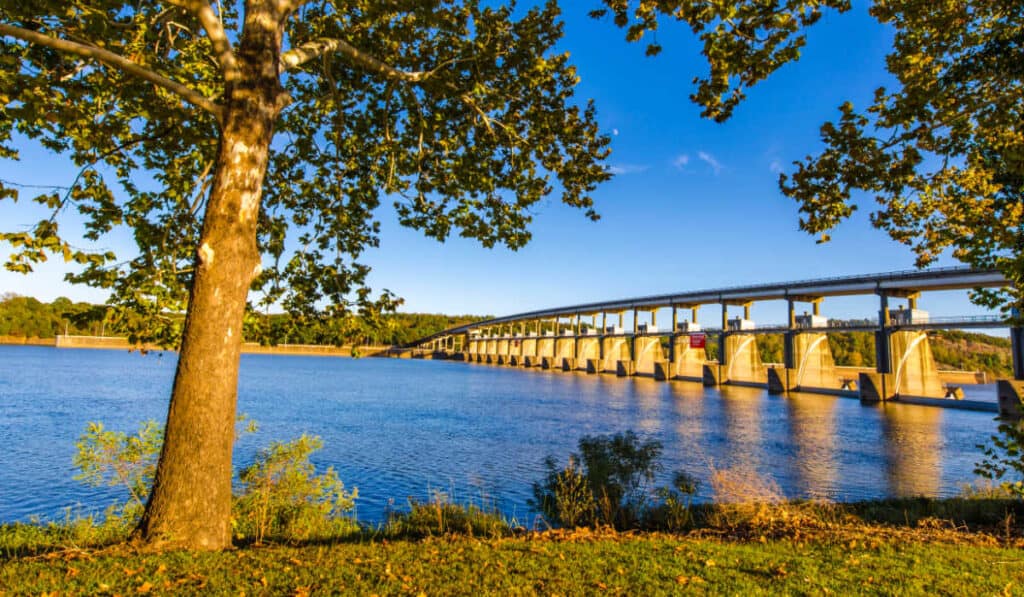The economic history of the Ozarks is a fascinating tale that provides valuable insights into the development of the region. As a physiographic region spanning Missouri, Arkansas, Oklahoma, and Kansas, the Ozarks has undergone significant changes since its early days of settlement. These changes have paved the way for the region to evolve into what we know today.
In the early 1800s, settlers in the Ozarks primarily relied on subsistence farming and herding for their livelihoods, with crops like maize, wheat, tobacco, and hemp grown alongside livestock such as pigs and sheep. As the region experienced growth and diversification, general farming started to take precedence over subsistence farming by the end of the 19th century. The transition brought about new economic opportunities for the residents, spurring further expansion and growth in the area.
Over the years, the Ozarks’ economy experienced fluctuations in poverty levels, with some geographical areas such as Benton, Madison, and Washington counties in the northwestern Ozarks witnessing significant poverty rate reductions from the 1960s to 2010. This economic transformation highlights the resilience and adaptability of the people who call the Ozarks home. It is fascinating to delve deeper into the rich economic history that has shaped this unique region.
Geography and Natural Resources
The Ozark Mountains stretch across parts of Missouri, Arkansas, and Kansas, creating a unique landscape of hills, valleys, and plateaus. The region is characterized by its Paleozoic rocks and, on its north side, a rich deposit of limestone. This diverse geological composition has contributed to the economic history of the Ozarks.
The weather in the Ozarks varies with the seasons, experiencing mild winters compared to areas such as the Smokies. These weather conditions, combined with the region’s fertile land and ample water supply from the rivers, including the Missouri River, have enabled generations of families, settlers, and farmers to cultivate various crops in the area.
Historically, agriculture played a significant role in the Ozark’s economy. Primarily, farmers focused on livestock, fruit, and truck farming due to the region’s landscape and fertile soil. However, the land also boasted a wealth of valuable natural resources, such as timber and minerals.
In particular, the Ozarks are known for their hardwood timber which, alongside agriculture, has been an essential industry in the region. Furthermore, the presence of minerals including lead and zinc has propelled the mining industry, providing additional income sources for the local economy.
The region’s assortment of granite and dolomite has also contributed to the development of economic activities, with the extraction and processing of these mineral resources stimulating the local industries. Additionally, the Ozark’s abundant water supply not only sustained agricultural activities but also fueled the growth of the energy sector in the region.
Overall, the Ozarks boast a rich and diverse landscape that has provided numerous opportunities for economic growth and development, with its unique geography and natural resources shaping the region’s economic history.
Early Settlers and Indigenous Populations
In the late 1700s, I found that increasing settlement by Euro-Americans in and around the Cherokee homeland in southern Appalachia led some tribal members to look for new land in what would become Arkansas Territory. The area that is now Northwest Arkansas was once the hunting grounds of the Osage Indians.
As I explored the interactions between the early settlers and indigenous populations, it’s clear that the Osage were the dominant group controlling and occupying the biggest portion of Missouri. Trade routes across the plains provided a means for settlers and indigenous populations to exchange goods and maintain relationships.
Over time, the hill folk, or Ozark settlers, predominantly of Scotch-Irish descent, started to make their home in the region. I discovered that the settlers relied on subsistence farming, hunting, and foraging in the rugged, forested terrain.
With the arrival of the settlers, the area’s economy experienced its first sustained boom from the harvesting of local timber. The nation’s expanding rail system created a demand for cross ties, leading to extensive logging in the region. After the forests were cleared of their virgin timber, revenue from the tomato and strawberry industries helped fill the economic vacuum.
Economic growth in the Ozarks, with its rich history, was shaped by the interactions between early settlers, hill folk, and indigenous populations. The region continues to hold cultural significance today, providing a glimpse into the lives of its early inhabitants and their resourceful means of survival.
Agriculture and Livestock
In the mid-1800s, agriculture played a significant role in the Ozarks. The region’s farmers focused on self-sustaining crops like beans, apples, and peaches that fed both themselves and their livestock. Markets were scarce, and products were mostly traded within the region until railroads arrived after the Civil War1. I’ve found that the Ozarks’ rocky soil and heavy red clay made it difficult for large plantation crops like cotton, tobacco, and hemp to grow2.
By the 1920s to 1950s, the agricultural industry in the Ozarks became the primary economic engine for Northwest Arkansas3. Grape production boomed when the Welch Grape Juice Company built a plant in Springdale in 19223. Alongside grapes, tomatoes and green beans emerged as important cash crops for farmers in the area3.
Livestock has also been an important aspect of the Ozarks’ economy. For example, Missouri ranks sixth in the number of pigs4. The Ozarks’ varied landscape and weather conditions influence the kinds of crops and livestock raised by the region’s “hill folk” or inhabitants5. Land use, history, and culture differ across the Ozarks’ three plateaus, which include the Boston Plateau, Springfield Plateau, and Salem Plateau5. These differences shape the agricultural practices in each part of the region.
In the face of changing weather patterns, water supply, and landscape features, the Ozarks’ farming communities have evolved to make the most out of their resources. As a result, agriculture and livestock farming continue to be a vital part of the Ozarks’ economy and culture to this day.
Industrialization and Economic Change
In the 19th and early 20th centuries, the Ozarks experienced a significant economic transformation, marked by industrialization and diversification. One key factor that played a crucial role in the economic change was the development of transportation systems, particularly railroads. The introduction of railroads facilitated easier access to resources in the uplands, allowing eastern capitalists to tap into the Ozarks’ abundant wealth.
The expansion of railroads led to the establishment and growth of several industries in the region. Timber became an increasingly important resource, with the railroads aiding in the transportation of lumber from remote forests to the mills. In addition, the railroads supported industries such as meatpacking, canning, and furniture manufacturing, which relied on the raw materials sourced from the forests.
Mining was another integral part of the Ozarks’ economy. As the railroads pushed deeper into the region, the extraction of mineral resources, such as lead, zinc, and iron, quickly scaled up. New mining towns emerged, and the mining industry served as a major employer for the local population. Consequently, a surge in the population occurred, as people from different backgrounds flocked to the region in search of better opportunities.
Several factors contributed to the shift in the Ozarks’ economy during this period:
- The construction of railroads, which opened up the region for industrial development
- Access to abundant natural resources, such as timber and minerals
- The expansion of various industries, creating new employment opportunities[line]here
These economic shifts brought about substantial social changes too, as the lifestyles and behaviors of the people were driven by the increasing integration of economic and social activities. For example, patterns of land use changed across the Ozarks, as the demands of the industrialists clashed with the traditional practices of the native Ozarkers.
As I’ve highlighted, the industrialization and economic changes in the Ozarks during the 19th and early 20th centuries were marked by the introduction of railroads, the growth of new industries, and access to an abundance of natural resources. These factors, combined, contributed to the transformation of the region’s economy and set the stage for further development in the years to come.
Impact of Civil War
The Civil War had a significant impact on the economic history of the Ozarks. The region was deeply affected by the conflict, and it took time for the Ozarks to recover. I would like to briefly discuss the changes the war brought, particularly on the economy, agriculture, and living conditions in the region.
The Ozarks, straddling the southern half of Missouri and a large part of northern Arkansas, as well as extending into northeast Oklahoma and southeast Kansas, experienced economic strain during the Civil War. With the North and South imposing restrictive economic policies, small farmers and tenant growers in the region were dealt a heavy blow. The presence of both Union and Confederate troops in the area further disrupted local markets and increased competition for limited resources.
Agriculture in the Ozarks was deeply affected by the Civil War. As winters could be brutal, ice and snow often hindered farmers from properly storing or marketing their crops. The crops they managed to grow were valuable to the Union, which relied on southern agriculture to meet the demands of its increasingly industrialized and growing population. Moreover, the war caused major labor shortages, particularly in the Deep South, as many slaves were either freed or enlisted as soldiers, resulting in less manpower for the region’s agricultural industry.
In terms of living conditions during the war, the Ozarks faced many challenges. While families living on the home front had to contend with constant struggles like food shortages, limited resources, and the ever-looming presence of death, families in the Deep South often had no choice but to resort to desperate measures for survival. With the breakdown of social and economic systems, many people in the region faced a painful period of adjustment and adaptation.
To sum up, the Civil War brought about significant changes and challenges to the economic and social landscape of the Ozarks. The region’s farming industry, labor force, and living conditions were severely impacted by the conflict, providing a glimpse into the struggles faced by the people during this turbulent time.
Modern Economy and Infrastructure
In recent times, the Ozarks has undergone significant changes in its economy, driven by modernization and infrastructure development. I’ve witnessed the intersection of these modern advancements as the turn-of-the-twentieth-century Ozarks were transformed, partly due to the extension of railroads.
Working as a researcher, I have noticed that institutional access to content related to the Ozarks’ economic history has become easier with technologies like Shibboleth and OpenAthens. These single sign-on technologies have allowed me – as well as other researchers and students – to use our library card numbers to gain access to a trove of academic resources.
Economic activities in the Ozarks have diversified over the years. Industries such as agriculture, mining, and other economic sectors have played important roles in the region’s growth. As a member of a local historical society, I can easily access the society’s site by using my personal account details and gain access to different studies explaining the economic transition in the Ozarks.
From my extensive research of the Ozarks’ economy, it is evident that access to relevant content, such as articles and journals, has greatly improved. This can be attributed to institutional subscriptions, IP-based access, and remote access provisions that enable researchers like myself to stay updated with email alerts, saved searches, and other convenient features.
I also found that keeping track of usage statistics and managing my institutional account has become hassle-free, mainly due to advancements in account management systems and the ability to purchase and activate subscriptions online. This has accelerated the dissemination of knowledge about the Ozarks’ economic history, helping proud Ozarkers like me to understand and appreciate the region’s growth.
In conclusion, the modern economy and infrastructure of the Ozarks is a testament to significant transformations over the years. Access to valuable information on the subject has become increasingly convenient, thanks to the use of technology-driven mechanisms, such as single sign-on systems, library cards, and comprehensive account management options. As an Ozarker, I am confident that this availability of data will help promote further research and understanding of the region’s rich economic history.
Notable Books and Academic Studies
I would like to highlight a few notable books and academic studies that have made significant contributions to the understanding of the Ozarks’ economic history.
One prominent researcher in this field is Brooks Blevins, the Noel Boyd Professor of Ozarks Studies at Missouri State University. Blevins is an acclaimed author and has written several books providing valuable insights into the economic and cultural history of the Ozarks. A notable work by Blevins is “A History of the Ozarks,” a trilogy exploring the extensive and diverse history of the region, covering the native Osage, the colonial era, the arrival of European settlers, and the development of the region’s economy over centuries.
In addition to the trilogy, Blevins has written “Ghost of the Ozarks: Murder and Memory in the Upland South,” a gripping study that delves into the darker aspects of the region’s history and its impact on the people living there. Another noteworthy book by Blevins is “Hill Folks: A History of Arkansas Ozarkers and their Image,” which examines how the people of the region have been perceived and how these perceptions have influenced their economic and social development.
Many academic studies have also contributed to our understanding of the Ozarks’ history, like the Ozarks Studies Institute’s book series. This series covers diverse topics, from economic and political aspects to the preservation of the region’s cultural and environmental heritage. It is a valuable resource for scholars and general readers who wish to gain critical knowledge of the Ozarks.
In summary, understanding the economic history of the Ozarks requires extensive knowledge of the cultural and historical context of the region. With the notable works and academic studies I’ve mentioned, readers can explore a wealth of well-researched information that will enable them to better appreciate the complexities of this fascinating region and its people.

